Simulation Standard
Silvaco面向半导体工艺和器件仿真工程师推出的技术刊物
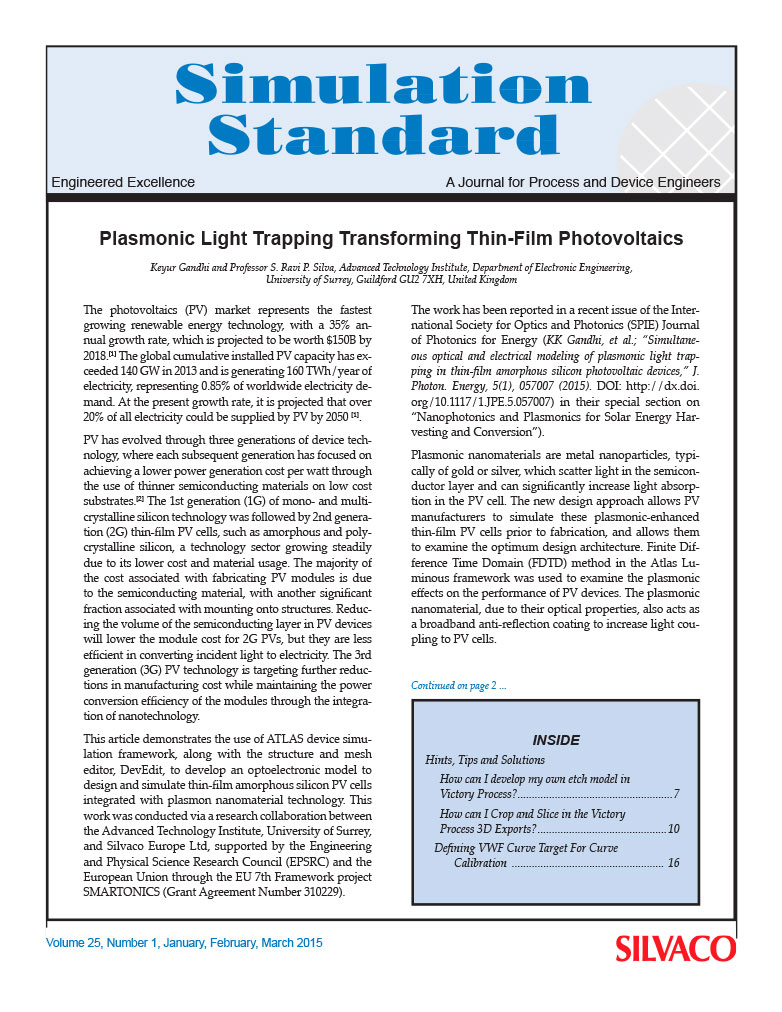
Plasmonic Light Trapping Transforming Thin-Film Photovoltaics
The photovoltaics (PV) market represents the fastest growing renewable energy technology, with a 35% annual growth rate, which is projected to be worth $150B by 2018.[1] The global cumulative installed PV capacity has exceeded 140 GW in 2013 and is generating 160 TWh/year of electricity, representing 0.85% of worldwide electricity demand. At the present growth rate, it is projected that over 20% of all electricity could be supplied by PV by 2050[1].
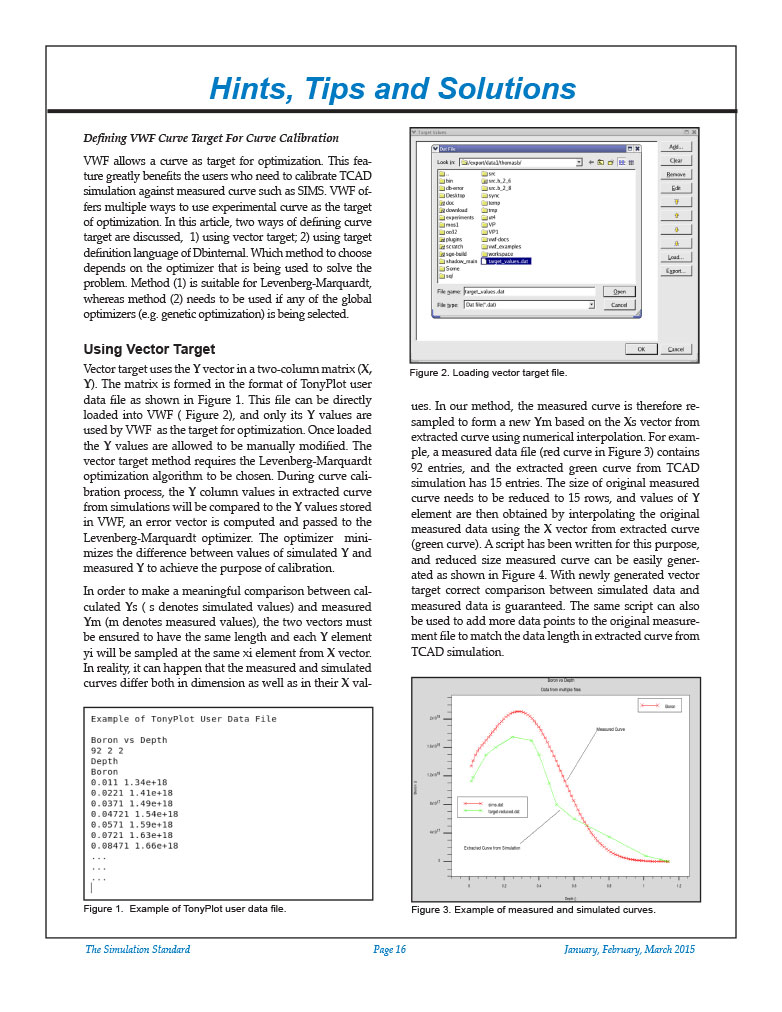
Hints, Tips, and Solutions – Defining VWF Curve Target For Curve Calibration
VWF allows a curve as target for optimization. This feature greatly benefits the users who need to calibrate TCAD simulation against measured curve such as SIMS. VWF offers multiple ways to use experimental curve as the target of optimization. In this article, two ways of defining curve target are discussed, 1) using vector target; 2) using target definition language of Dbinternal. Which method to choose depends on the optimizer that is being used to solve the problem. Method (1) is suitable for Levenberg-Marquardt, whereas method (2) needs to be used if any of the global optimizers (e.g. genetic optimization) is being selected.
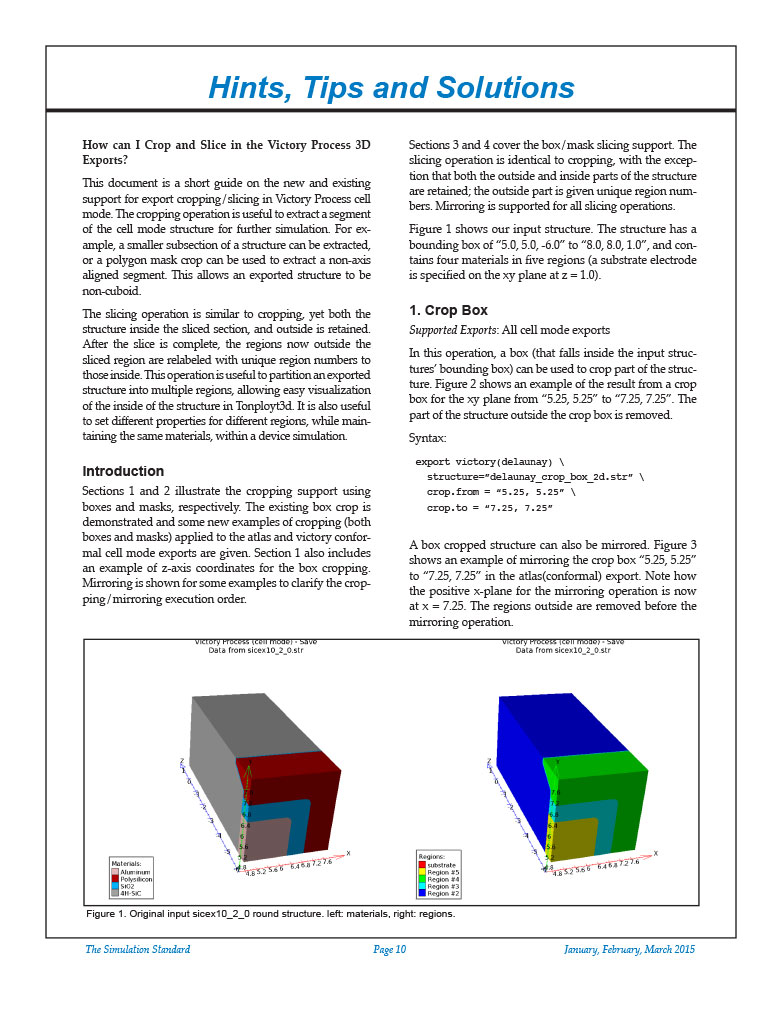
Hints, Tips, and Solutions – Crop and Slice in the Victory Process 3D Exports
This document is a short guide on the new and existing support for export cropping/slicing in Victory Process cell mode. The cropping operation is useful to extract a segment of the cell mode structure for further simulation. For example, a smaller subsection of a structure can be extracted, or a polygon mask crop can be used to extract a non-axis aligned segment. This allows an exported structure to be non-cuboid.
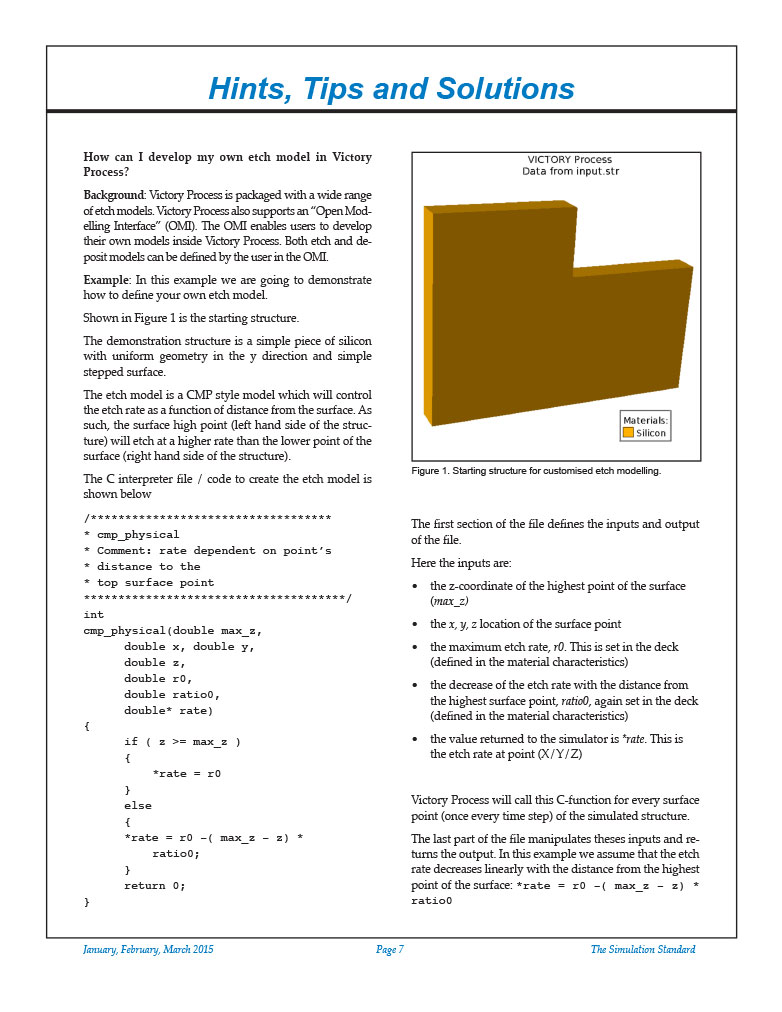
Hints, Tips and Solutions – Develop your own etch model in Victory Process
Background: Victory Process is packaged with a wide range of etch models. Victory Process also supports an “Open Modelling Interface” (OMI). The OMI enables users to develop their own models inside Victory Process. Both etch and deposit models can be defined by the user in the OMI.
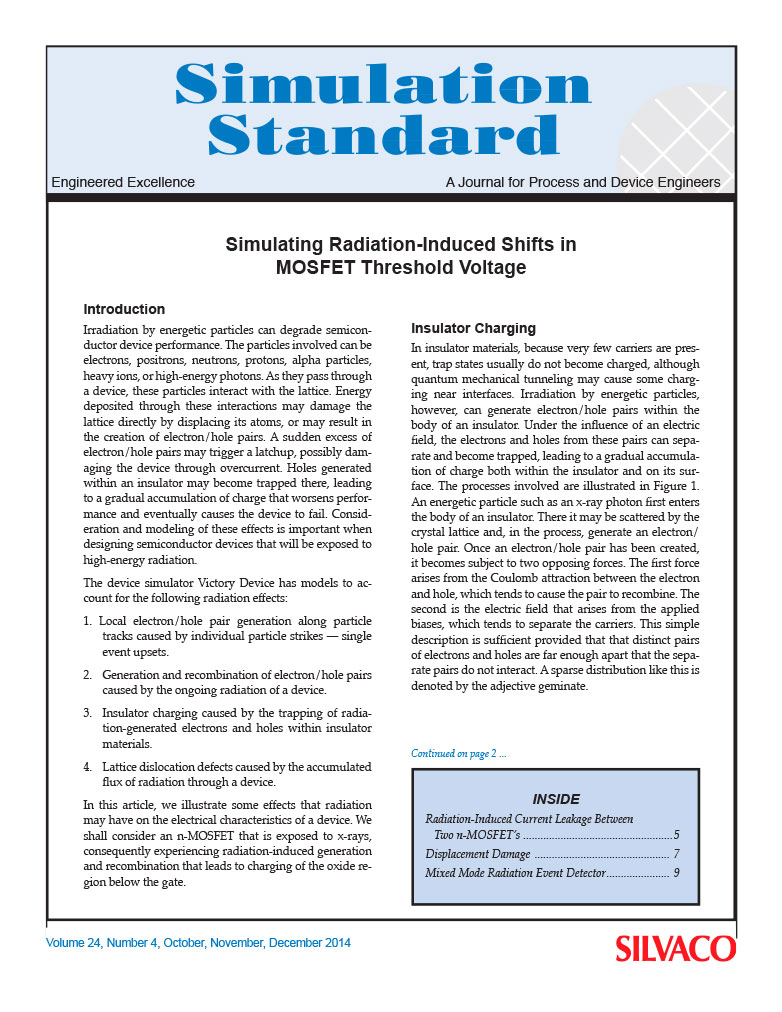
Simulating Radiation-Induced Shifts in MOSFET Threshold Voltage
Irradiation by energetic particles can degrade semiconductor device performance. The particles involved can be electrons, positrons, neutrons, protons, alpha particles, heavy ions, or high-energy photons. As they pass through a device, these particles interact with the lattice. Energy deposited through these interactions may damage the lattice directly by displacing its atoms, or may result in the creation of electron/hole pairs. A sudden excess of electron/hole pairs may trigger a latchup, possibly damaging the device through overcurrent. Holes generated within an insulator may become trapped there, leading to a gradual accumulation of charge that worsens performance and eventually causes the device to fail. Consideration and modeling of these effects is important when designing semiconductor devices that will be exposed to high-energy radiation.
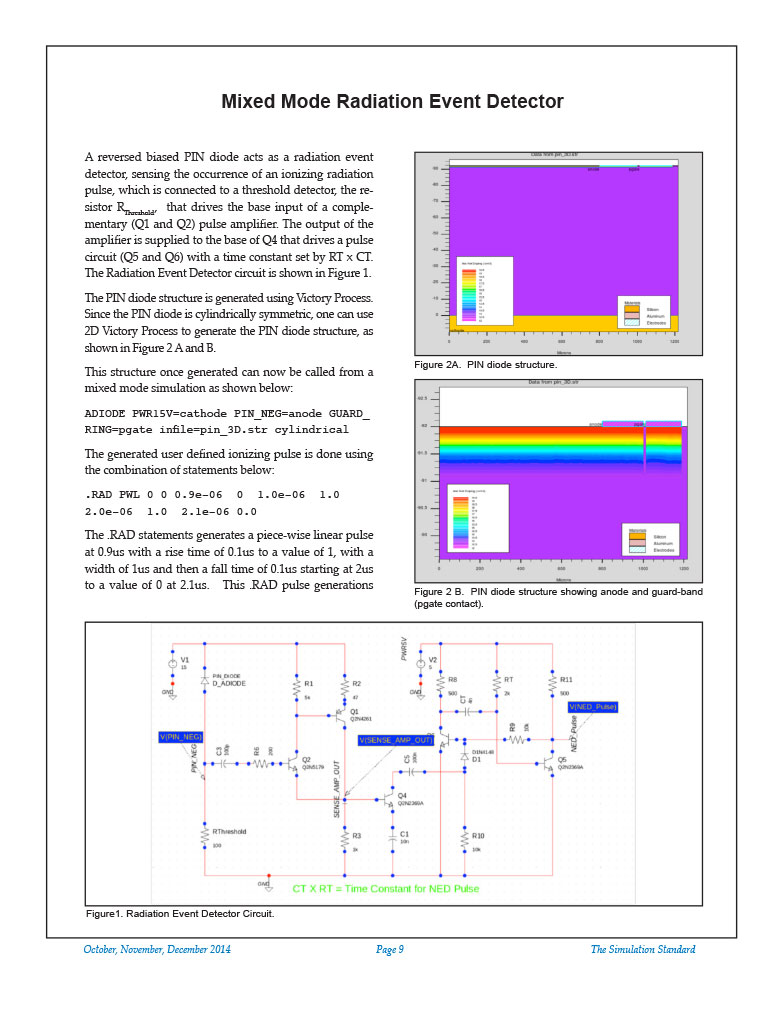
Mixed Mode Radiation Event Detector
A reversed biased PIN diode acts as a radiation event detector, sensing the occurrence of an ionizing radiation pulse, which is connected to a threshold detector, the resistor RThreshold, that drives the base input of a complementary (Q1 and Q2) pulse amplifier. The output of the amplifier is supplied to the base of Q4 that drives a pulse circuit (Q5 and Q6) with a time constant set by RT x CT. The Radiation Event Detector circuit is shown in Figure 1.

